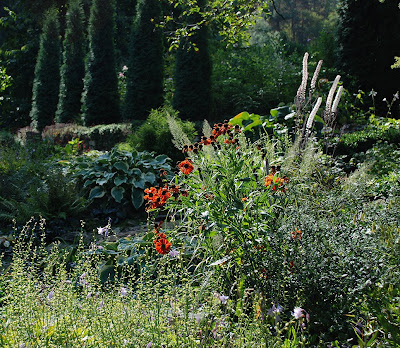This is the saison of grasses. Here you are three fantastic pages on grasses.
This picture was shot in the beautiful garden of L'Ortie-Culture in Belgium. Their page is in French, but their pictures speak for themselves.
 Concerning grasses, the Knoll Gardens is the nursery number one in Britain. Apart from browsing through their garden pictures, you should also have a look at their catalog. You will have a completely different idea about what grasses are.
Concerning grasses, the Knoll Gardens is the nursery number one in Britain. Apart from browsing through their garden pictures, you should also have a look at their catalog. You will have a completely different idea about what grasses are.
I’m convinced that as to the use of grasses in gardening, Piet Oudolf is one of the best garden designers of the world – although he is that in every other aspect, too. In his homepage you can see some dozens of beautiful images on his works.
This picture was shot in the beautiful garden of L'Ortie-Culture in Belgium. Their page is in French, but their pictures speak for themselves.
 Concerning grasses, the Knoll Gardens is the nursery number one in Britain. Apart from browsing through their garden pictures, you should also have a look at their catalog. You will have a completely different idea about what grasses are.
Concerning grasses, the Knoll Gardens is the nursery number one in Britain. Apart from browsing through their garden pictures, you should also have a look at their catalog. You will have a completely different idea about what grasses are.I’m convinced that as to the use of grasses in gardening, Piet Oudolf is one of the best garden designers of the world – although he is that in every other aspect, too. In his homepage you can see some dozens of beautiful images on his works.







